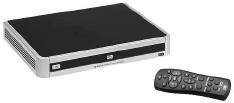One of the first wireless projects that people undertake is sharing their music library throughout the house. It’s a good first project because many devices are available and because the demands that the task places on a wireless network are small.
Music file sizes are relatively small, which means that even 802.11b devices will work well for this purpose. An MP3 song that is about 3 minutes long will run about 3MB when recorded at a 128-Kbps bit rate. A library of MP3 files of 30GB will contain something like 10,000 songs, or approximately 800 records.
That’s a fair-sized collection in anyone’s book. An audio library is a compelling reason to go to the trouble of creating a wireless connection from your LAN to your receiver or TV. So it’s no surprise that among the first wireless devices for home entertainment networks is a group of wireless receivers.
Assembling a Wireless Audio System
You have some good choices when you are trying to assemble a wireless audio system. Most people create a music library first, and then look to exploit its existence. Thus a PC may serve as the MP3 repository.
One of the obvious choices is to have your PC serve as your entertainment hub. Any PC with a wireless NIC gives you both a wireless network connection and lets you output audio directly from a sound card to a stereo receiver.
Most receivers will accept digital output from an advanced sound card such as Creative’s Audigy 2 series or the revolution 7.1 surround sound board from M audio. Outputs from these boards are either through minijacks (like typical small headphones) or through a standard RCA digital connection.
One of the our first entertainment network was based around a Gateway Destination PCTV that was in service for about four years. The advantage of a PCTV is that it can directly attach to your entertainment components, serve as a tuner, a PVR, and you can use the computer to control just about any controllable device.
With a PCTV, you can manage storage, input and output configuration, and multiple devices. PCs are often open architecture, so as a PCTV gets older you can upgrade components. My Destination went through three versions of the Windows operating system, three video cards, two tuners, and two sound boards before it was retired.
The PCTVs of the present come with ever-improving audio standards. For example, the new Intel BTX motherboards have advanced sound capabilities as part of their motherboard. The modern version of this concept is the Windows Media Center PC. You don’t need a screaming PC to serve your entertainment network’s needs.
The truth is that even an old PC will serve well as an audio server. Mostly what you need in a multimedia PC serving up audio files is reasonable I/O to disk and the ability to support higher-end audio and video cards. These are very modest requirements.
Computers with no AGP ports are at a disadvantage, but you can still purchase an ATI All-in-Wonder PCI card and have one of the newer Audigy boards work in a PC that is running an operating system as old as Windows 98.
So your old PC might make a good choice as an audio file server and wireless connection point, and provide even longer service. Since your PCTV usually needs to be directly connected to your TV and cable, it’s generally centrally located. A PCTV interface with a wireless access point makes wireless connections to other devices easy to create.
Networked audio receivers are certainly an intriguing possibility for starting to build a wireless home entertainment network. They can store and play audio files, give you Internet radio access, and perform other useful audio functions. There aren’t many on the market yet, and the ones that are come with wired Ethernet connections.
The HP Wireless Digital Media Receiver ew500 is one of the first examples of this type of device.
An example of a higher-end networked receiver is the Onkyo TXNR900 7.1 Digital Audio Receiver.
The TXNR900 comes with a built-in Linux system to manage the network connection. Included in this receiver is Internet radio with 30 assignable presets. This model requires a separate tuner for AM and FM reception.
Although you can add wireless capability to this receiver, you will probably see more choices appearing on the market that are wireless devices straight out of the box.
Both a PCTV and a wireless receiver are typically the kinds of devices that you would use as a central hub in an entertainment network. In the years to come you’ll see more and more wireless entertainment devices, such as wireless speakers, that make both of these components easier to connect wirelessly.
However, you don’t need to make the investment in technology that a computer or receiver requires to wirelessly share your music. There are now some simpler ways to do so.

